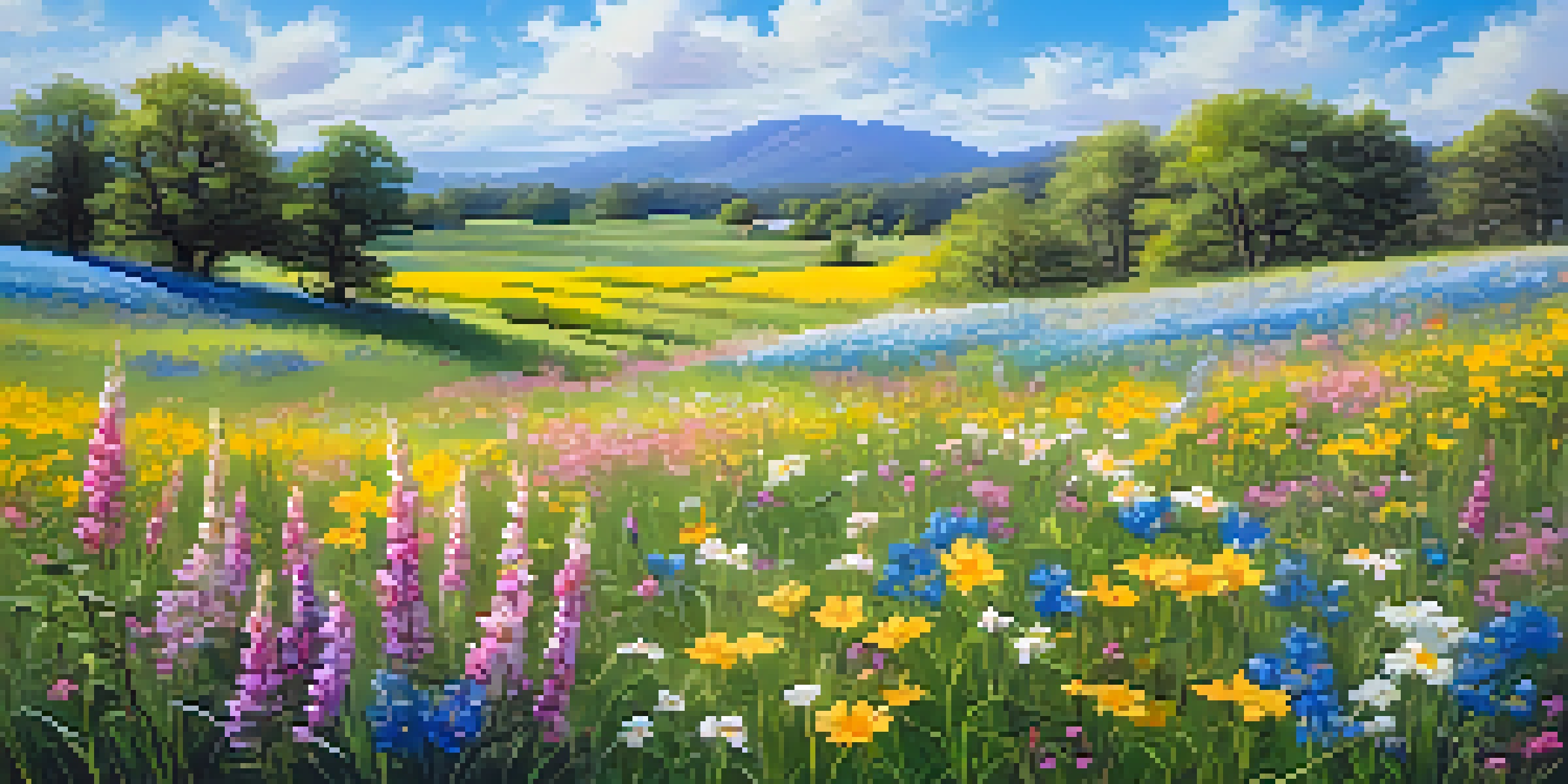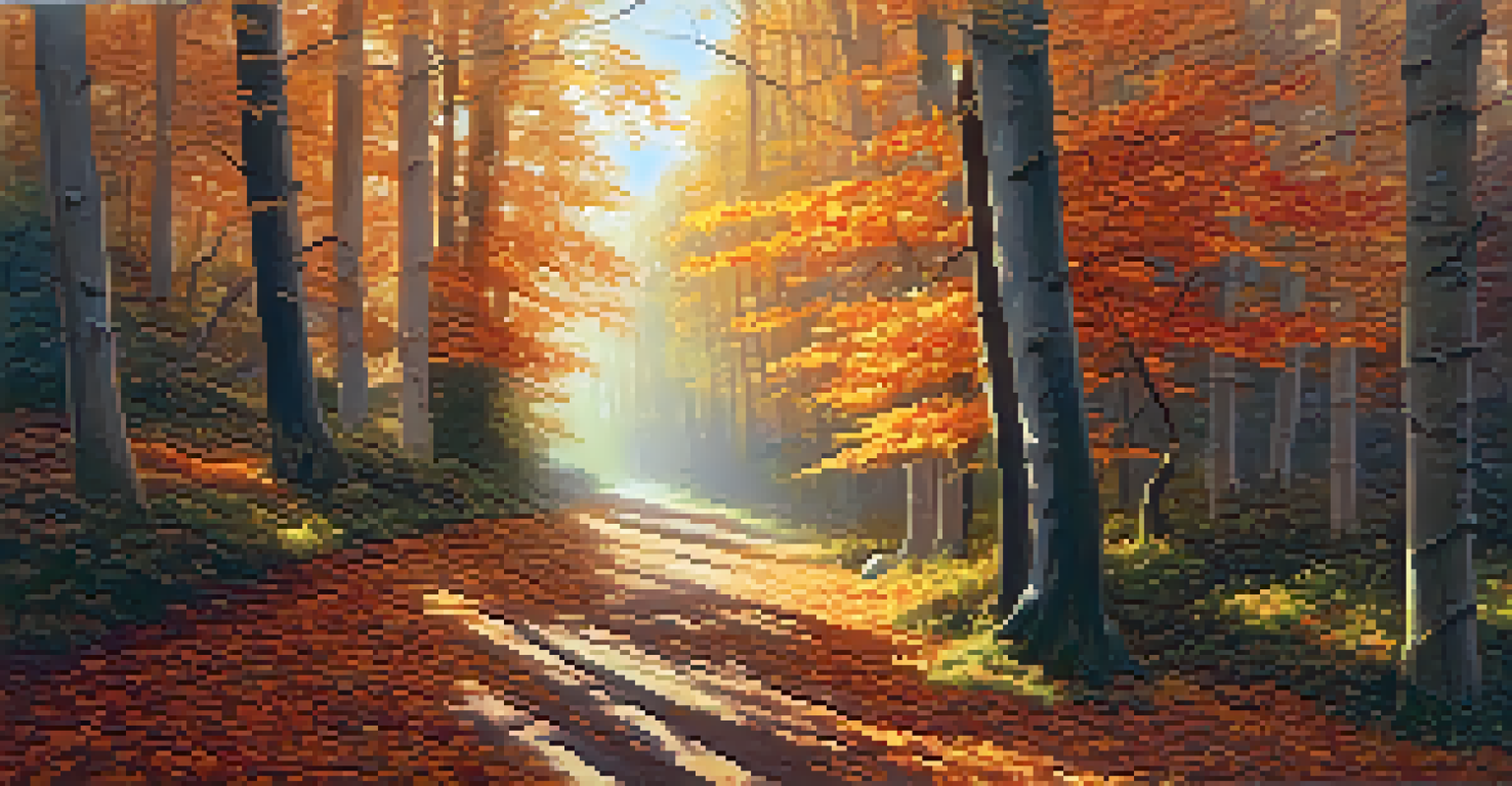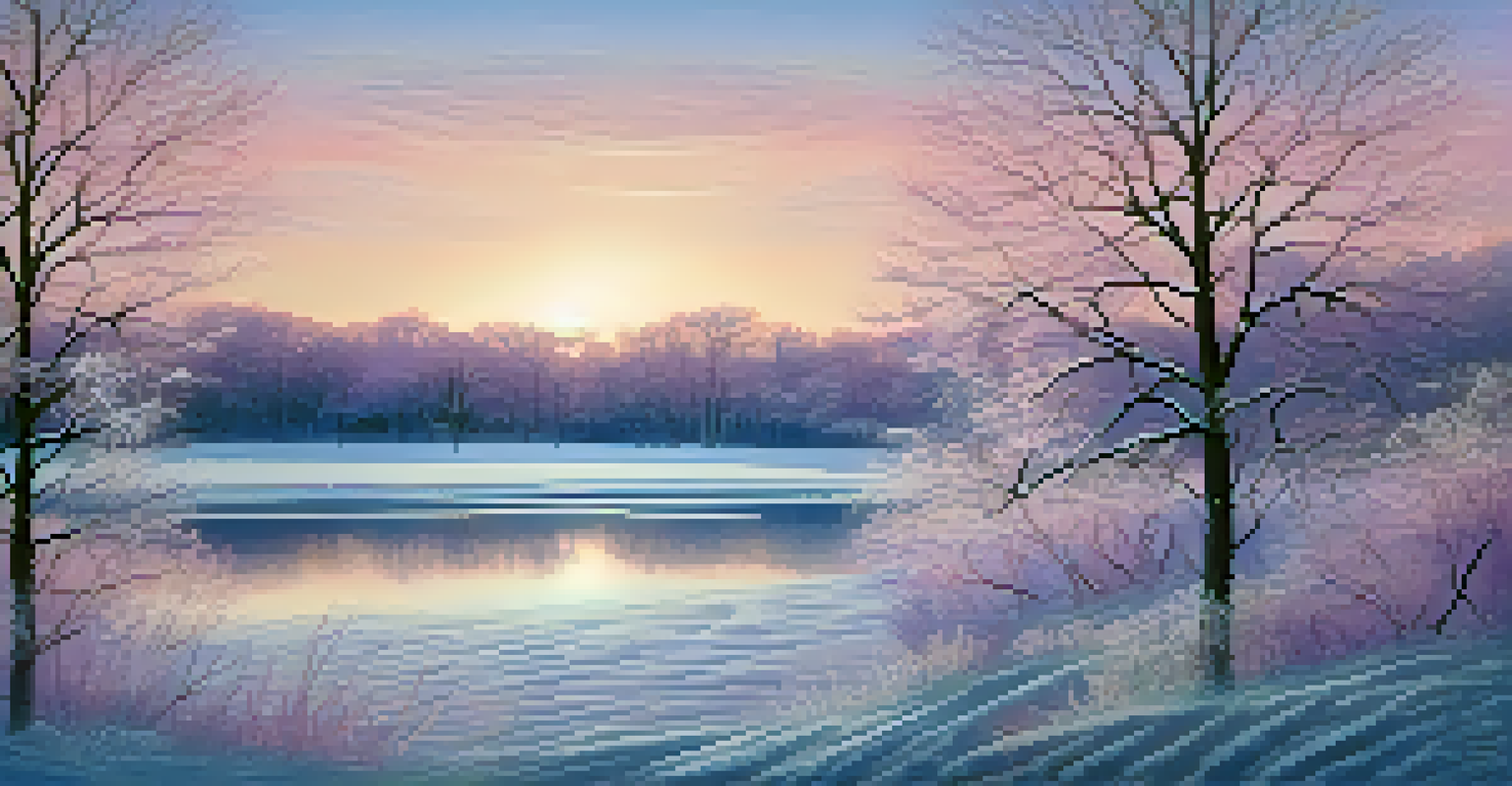The Impact of Seasonal Changes on Artistic Expression

The Connection Between Seasons and Creativity
Seasons have long been intertwined with human creativity, influencing how artists express themselves. Each season brings unique colors, moods, and themes that resonate deeply with our emotions. For instance, the vibrant hues of autumn leaves can spark a painter's imagination, while the tranquility of winter may inspire a writer to reflect on solitude.
Every artist dips his brush in his own soul, and paints his own nature into his pictures.
Beyond colors, seasons evoke specific feelings. Spring often symbolizes renewal and hope, prompting artists to explore themes of rebirth and growth. Conversely, winter's starkness can lead to introspective works, as artists grapple with themes of isolation and introspection in their creations.
Ultimately, the changing seasons serve as a canvas for artistic expression, allowing creators to channel their observations and emotions into their work. This dynamic relationship between nature and artistry is essential in understanding how our environment influences creativity.
Nature’s Palette: Colors of the Seasons
Colors play a pivotal role in how we perceive and react to seasonal changes. Each season brings its own distinct palette; think of the warm oranges and browns of fall compared to the cool blues and whites of winter. Artists often draw inspiration from these colors, using them to evoke specific feelings and moods in their work.

For example, a summer landscape might burst with vivid greens and bright florals, reflecting joy and vitality. A painter might use these colors to capture the essence of a sun-drenched day, inviting viewers to feel the warmth and energy of summer. This intentional use of color helps convey the emotional weight of each season.
Seasons Inspire Artistic Expression
The changing seasons serve as a rich source of inspiration for artists, influencing their work through unique colors, moods, and themes.
Moreover, artists can also play with these seasonal colors to challenge perceptions or convey deeper meanings. By juxtaposing the vibrant colors of spring against the muted tones of winter, an artist can create a visual dialogue about hope and despair, highlighting the contrasts inherent in life's cycles.
Seasonal Themes in Literature
Literature, much like visual arts, often reflects the seasons through themes and narratives. Writers may choose to set their stories in specific seasons to enhance mood or symbolize character growth. For instance, a love story blossoming in spring can symbolize new beginnings, while a tale of loss during autumn may evoke nostalgia and reflection.
The seasons are what a symphony ought to be: four movements, each different, but united in a harmony of the whole.
Seasonal shifts can also influence narrative structures. A story that unfolds during a summer vacation might capture the fleeting nature of youth, while a plot set in the depths of winter can explore themes of endurance and survival. By aligning the characters' journeys with seasonal changes, authors create a richer, more immersive experience for readers.
Additionally, seasonal metaphors frequently appear in poetry, where the changing landscape becomes a powerful symbol for life's transitions. Poets often use nature's cycles to convey complex emotions, inviting readers to explore their own connections to the seasons and what they represent in their lives.
Music and the Seasons: An Auditory Journey
Music, too, is profoundly influenced by seasonal changes. Composers often capture the essence of a season through their choice of instruments, tempos, and melodies. For example, the lively rhythms of a summer festival can evoke feelings of joy and celebration, while the slow, haunting notes of a winter ballad may stir feelings of longing and nostalgia.
Many classical composers have created works specifically inspired by seasons. Vivaldi’s 'The Four Seasons' is a prime example, translating the characteristics of each season into sound. Each concerto evokes its own atmosphere, allowing listeners to experience the changing seasons through music.
Cultural Festivals Celebrate Seasons
Seasonal festivals provide platforms for artists to showcase their work, fostering community and highlighting the emotional connections associated with each time of year.
Contemporary artists also draw from seasonal themes, using them to reflect on personal experiences or societal issues. Seasonal changes can inspire songs that resonate with listeners, creating an auditory representation of shared emotions and experiences, making music a powerful vehicle for artistic expression.
Visual Arts: Seasons Through the Artist's Eye
In the realm of visual arts, seasonal changes provide a rich source of inspiration for artists. From impressionist landscapes that capture the fleeting beauty of cherry blossoms in spring to stark, minimalist winter scenes, artists translate their observations into compelling visual narratives. The changing light and atmosphere throughout the seasons can profoundly influence an artist's choice of style and technique.
For instance, the bright, saturated colors of summer might lead an artist to adopt a more expressive, dynamic brushwork, while the muted tones of fall may encourage a more thoughtful, subdued approach. This adaptability showcases the artist's ability to respond to their environment creatively, weaving the essence of the seasons into their work.
Moreover, artists often explore seasonal themes in their exhibitions, inviting viewers to reflect on their own connections to nature. By presenting a collection focused on a particular season, artists can create a cohesive narrative that resonates with audiences, allowing them to experience the beauty and complexities of each season through a visual lens.
The Role of Festivals and Cultural Events
Cultural events and festivals are deeply rooted in seasonal changes and play a significant role in artistic expression. These celebrations often reflect the themes and moods associated with different times of the year, providing a platform for artists to showcase their work. For example, harvest festivals in the fall celebrate abundance and community, often featuring local artists and craftsmen.
These events not only highlight artistic talents but also foster a sense of belonging among community members. By participating in seasonal festivals, artists and audiences alike can engage with their environment and each other, creating a shared experience that celebrates the beauty of nature and creativity.
Personal Reflection Drives Creativity
Seasonal changes prompt personal reflection in artists, leading them to explore new themes and emotions in their creative processes.
Furthermore, seasonal festivals often inspire new works of art, as artists respond to the themes, colors, and emotions associated with these celebrations. This interplay between cultural events and artistic expression enriches both the art community and the broader society, allowing for a vibrant exchange of ideas and creativity.
Personal Reflection and Seasonal Creativity
Seasonal changes often prompt personal reflection, influencing how artists approach their work. Each season can evoke different emotions and thoughts, leading artists to explore new themes and ideas in their creations. For example, the reflective calm of winter might inspire an artist to create introspective pieces, while the vibrant energy of summer could lead to more exuberant expressions.
Many artists keep journals or sketchbooks to capture their thoughts and feelings throughout the year, allowing them to document how the changing seasons impact their creative processes. This practice not only fosters self-awareness but also helps artists hone their skills by experimenting with new styles and techniques inspired by seasonal shifts.

Ultimately, the impact of seasonal changes on artistic expression is both profound and personal. By embracing the dynamic relationship between nature and creativity, artists can continue to evolve their work, drawing from the rich tapestry of experiences that each season brings.